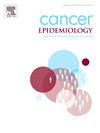睡眠相关因素与膀胱癌之间的关系:英国生物银行的一项横断面研究
IF 2.3
3区 医学
Q3 ONCOLOGY
引用次数: 0
摘要
本研究的目的是探讨各种睡眠相关因素与膀胱癌风险之间的关系。这些因素包括睡眠时间、早上起床的难易程度、白天打盹、失眠、打鼾、白天打瞌睡和生物钟类型。方法本研究采用横断面法,数据来源于UK Biobank。招募时(2006-2010年)共纳入502,492名参与者。对缺失数据进行了多次补全。采用经协变量校正的单变量logistic回归模型检验睡眠相关因素与膀胱癌之间的相关性,如果存在膀胱癌相关因素,则采用多变量logistic回归评估这些因素之间可能存在的相互混淆。进行了分层分析,以评估这种关联是否适用于男女。p值小于0.05认为具有统计学意义。结果1414名参与者(0.28 %)在招募时被诊断为膀胱癌。在对所有协变量进行调整后,白天小睡和频率为“通常”的失眠与膀胱癌的高患病率相关。多变量logistic回归分析显示,白天小睡和失眠与膀胱癌独立相关,没有明显的混杂效应证据。分层分析显示了一种潜在的趋势,即白天频繁的午睡或失眠可能与男女患膀胱癌的风险增加有关。结论白天午睡和失眠与膀胱癌发病风险增加有关。未来的研究需要进一步探讨其潜在的机制和建立因果关系。本文章由计算机程序翻译,如有差异,请以英文原文为准。
The associations between sleep-related factors and bladder cancer: A cross-sectional study in the UK Biobank
Background
The aim of this study was to explore the associations between various sleep-related factors and bladder cancer risk. These factors included sleep duration, ease of getting up in the morning, daytime napping, insomnia, snoring, daytime dozing, and chronotype.
Methods
This study is cross-sectional, and the data were obtained from UK Biobank. A total of 502,492 participants at recruitment (2006–2010) were included. Multiple imputation was performed to address missing data. Univariable logistic regression models adjusted for covariates were used to examine associations between sleep-related factors and bladder cancer, and if there were factors associated with bladder cancer, a multivariable logistic regression would be conducted to evaluate potential mutual confounding between these factors. A stratified analysis was conducted to assess if the associations would be applicable for both genders. A P-value below 0.05 was considered to indicate statistical significance.
Results
There were 1414 (0.28 %) participants had been diagnosed with bladder cancer at recruitment. After adjusting for all covariables, daytime napping and insomnia with a frequency of “usually” were associated with a higher prevalence of bladder cancer. The multivariable logistic regression suggested that daytime napping and insomnia remained independently associated with bladder cancer and there was no significant evidence of confounding effects. Stratified analyses indicated a potential trend suggesting that frequent daytime napping or insomnia may be associated with an increased risk of bladder cancer in both genders.
Conclusion
Daytime napping and insomnia are associated with an increased risk of bladder cancer. Future research is needed to explore the underlying mechanisms and establish causative relationships.
求助全文
通过发布文献求助,成功后即可免费获取论文全文。
去求助
来源期刊

Cancer Epidemiology
医学-肿瘤学
CiteScore
4.50
自引率
3.80%
发文量
200
审稿时长
39 days
期刊介绍:
Cancer Epidemiology is dedicated to increasing understanding about cancer causes, prevention and control. The scope of the journal embraces all aspects of cancer epidemiology including:
• Descriptive epidemiology
• Studies of risk factors for disease initiation, development and prognosis
• Screening and early detection
• Prevention and control
• Methodological issues
The journal publishes original research articles (full length and short reports), systematic reviews and meta-analyses, editorials, commentaries and letters to the editor commenting on previously published research.
 求助内容:
求助内容: 应助结果提醒方式:
应助结果提醒方式:


